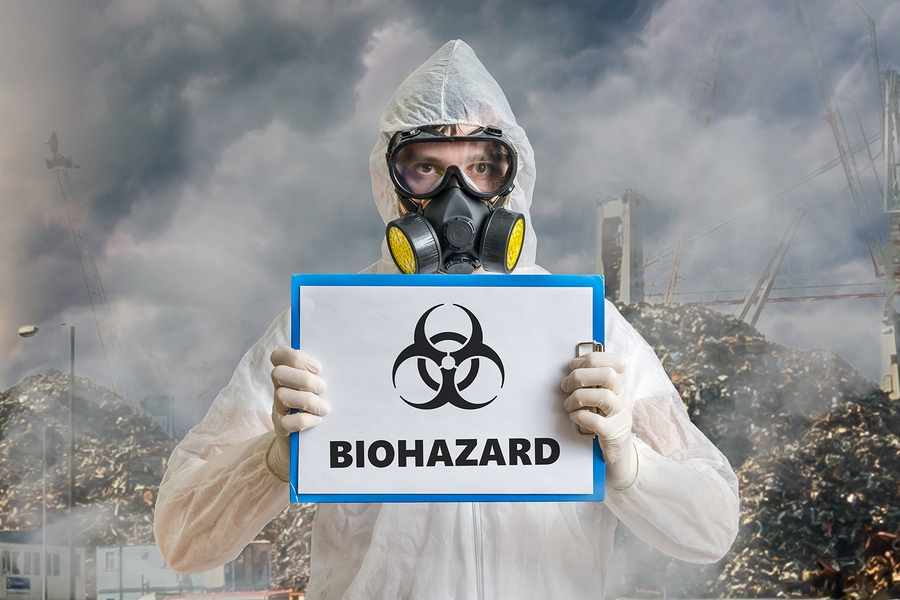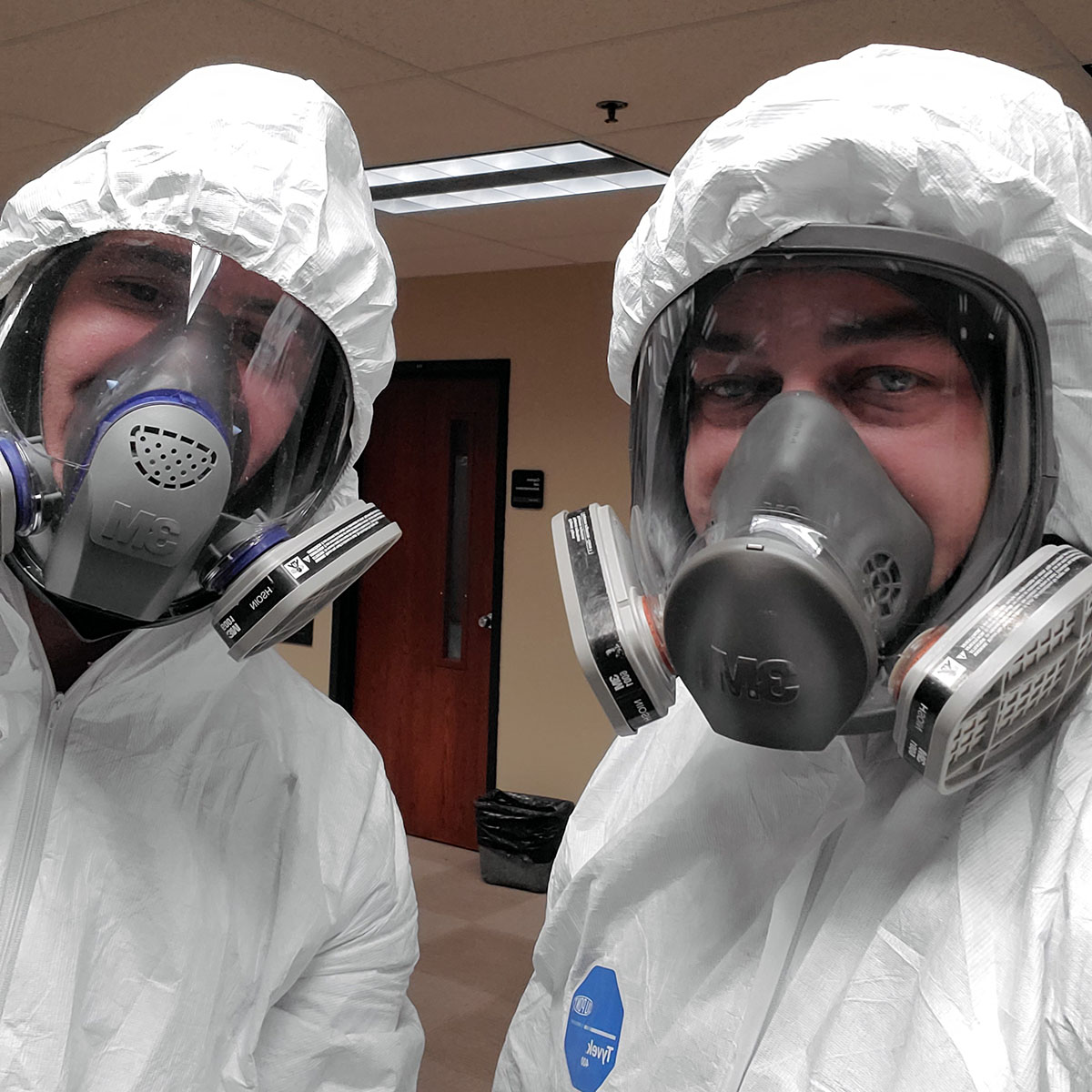Expert Blood Cleanup: Making Sure Safe and Thorough Purification
Expert Blood Cleanup: Making Sure Safe and Thorough Purification
Blog Article
Specialist Biohazard Cleansing and Decontamination for Blood, Bodily Fluids, and Hazardous Products
The potential health risks linked with exposure to biohazards emphasize the vital demand for precise handling and detailed cleanup. As we browse the detailed landscape of biohazard cleanup, comprehending the subtleties of regulations, compliance, and the customized tools at play becomes imperative in making sure a detailed and safe decontamination process.
Wellness Risks of Biohazard Exposure
Exposure to biohazards presents substantial health dangers that can lead to extreme repercussions for people and communities alike. Biohazards include a large array of organic substances, including blood, bodily liquids, mold and mildew, bacteria, infections, and other possibly transmittable materials. When individuals enter into contact with these biohazards, whether with accidents, incorrect handling, or ecological exposure, they face the danger of having serious diseases or conditions.
Among the key health and wellness dangers related to biohazard exposure is the transmission of infectious illness. Bloodborne microorganisms such as HIV, hepatitis B and C, and different microorganisms can be existing in biohazardous products, posturing a straight hazard to human health. Inhaling airborne biohazards like mold and mildew spores or entering call with infected surfaces can additionally cause respiratory system concerns, allergies, and other adverse health effects.
In addition, biohazard direct exposure can have long-lasting health implications, with some diseases showing up years after the preliminary contact (Blood Cleanup). For that reason, it is essential to focus on appropriate biohazard cleaning and purification to reduce these health and wellness risks and ensure the safety and security of people and communities

Specialized Training for Biohazard Cleaning
When it concerns taking care of biohazard cleanup efficiently and securely, specialized training plays a fundamental function in making sure proper decontamination treatments are complied with. Biohazard cleaning requires particular expertise and skills to successfully reduce threats related to bloodborne microorganisms, bodily fluids, and harmful products. Specialists trained in biohazard clean-up go through extensive guideline on how to safely manage, get rid of, and get rid of biohazardous materials to stop contamination and direct exposure.
Specialized training for biohazard cleaning covers a variety of crucial topics, including proper individual protective equipment (PPE) use, bloodborne virus recognition, purification strategies, and contaminated materials disposal methods. People educated in biohazard clean-up are furnished with the required experience to analyze contamination degrees, determine prospective risks, and execute appropriate cleanup treatments in conformity with regulative standards.
Continual training and education and learning are vital in the area of biohazard clean-up to stay updated on the latest purification modern technologies, security protocols, and regulations. By buying specialized training, biohazard clean-up professionals can effectively react to emergency situation clean-up situations and guard both public health and wellness and the atmosphere.
Importance of Correct Decontamination Techniques
Utilizing correct purification techniques is critical in biohazard cleaning to successfully minimize and remove dangerous products health and wellness dangers. Reliable purification not just makes sure the removal of noticeable traces of blood, bodily liquids, and other biohazards yet likewise targets unnoticeable virus that may posture major wellness risks otherwise correctly gotten rid of. By complying with stringent purification protocols, educated professionals can dramatically decrease the danger of direct exposure to harmful microbes, viruses, and germs that can result in infections or conditions.
Appropriate decontamination methods entail using specialized devices and anti-bacterials that are specifically created to neutralize biohazards efficiently. Thorough cleaning and sanitation of contaminated areas are essential to avoid the spread of virus and make certain a safe environment for check that passengers. Furthermore, the proper disposal blood spill cleanup procedure of biohazardous waste adhering to decontamination treatments is essential in protecting against contamination of other surface areas or individuals.

Tools and Devices for Safe Cleaning
When dealing with blood, bodily fluids, or hazardous products, biohazard cleansing professionals count on specialized equipment to decrease exposure dangers and extensively decontaminate the afflicted location. Additionally, biohazard cleaning sets containing disinfectants, absorptive products, and biohazard bags are used to safely consist of and get rid of of polluted things.
Advanced cleansing tools like hospital-grade disinfectants, HEPA-filtered vacuum cleaners, and misting machines are utilized to sterilize surface areas and get rid of biohazards effectively. Specialized devices such as sharps containers and biohazard garbage disposal containers are made use of to securely take care of sharp objects and biohazardous waste materials. By using the ideal tools and devices, biohazard cleansing professionals can ensure a detailed cleanup process that prioritizes safety and reduces health and wellness dangers for both workers and occupants of the affected space.
Regulations and Compliance in Biohazard Cleaning
Proper adherence to regulations and compliance criteria is paramount in biohazard cleansing to ensure the safety and security of both personnel and the environment. Government agencies such as OSHA (Occupational Safety and Health Administration) and the EPA (Epa) have actually developed details standards for biohazard clean-up treatments to lessen health and wellness dangers and ecological contamination. These guidelines cover a series of elements including the handling, transport, and disposal of biohazardous products, in addition to the necessary training and safety devices required for personnel associated with the clean-up process.
Biohazard cleaning companies must remain current with these guidelines to guarantee that their procedures satisfy the needed safety criteria. Failing to conform with these regulations can cause serious consequences, including fines, lawful action, and jeopardizing the health and wellness of individuals and the setting. By complying with stringent guidelines and compliance measures, biohazard cleansing companies can successfully minimize dangers and guarantee a comprehensive and secure clean-up procedure for all parties entailed.
Final Thought
In verdict, biohazard cleaning and purification require specific training, appropriate strategies, and adherence to policies. Direct exposure to blood, bodily fluids, and unsafe materials postures significant Resources health and wellness risks, making it vital to use the right devices and devices for safe clean-up. By adhering to strict procedures and standards, specialists can efficiently alleviate the threats connected with biohazard direct exposure and make certain the safety of both themselves and others.
As we navigate the complex landscape of biohazard cleaning, understanding the subtleties of laws, compliance, and the customized devices at play ends up being necessary in making sure a risk-free and detailed decontamination process. (Blood Cleanup)
When it comes to dealing with biohazard cleanup efficiently and safely, specialized training plays a fundamental role in guaranteeing appropriate decontamination procedures are followed.Utilizing proper decontamination techniques is critical in biohazard cleanup to effectively eliminate unsafe products and decrease health risks. In addition, biohazard cleansing sets including disinfectants, absorptive materials, and biohazard bags are used to securely consist of and dispose of infected products.
Government agencies such as OSHA (Occupational Safety And Security and Health And Wellness Administration) and the EPA (Environmental Security Company) have developed details guidelines for biohazard cleanup treatments to reduce health threats and environmental contamination.
Report this page